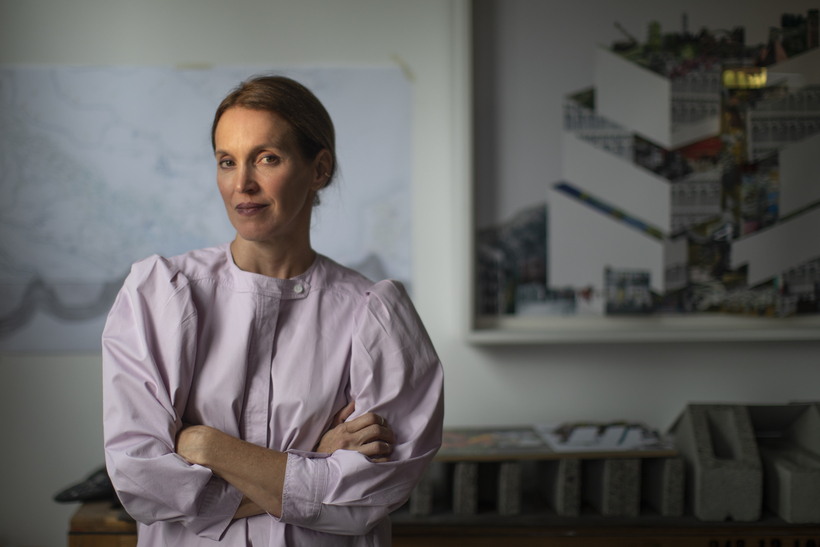The Mexican architect Tatiana Bilbao doesn’t have a signature building style that’s instantly recognizable. She’s not a top-down diva who designs grand sculptural statements by computer. Instead, Bilbao is singularly engaged with how the world is made and how people interact with her projects. Thriving on input, she prioritizes listening, documenting, and collaborating, a process that begins with her handmade, collaged drawings, which are, she says, “the first sentence in a conversation about architecture.” Bilbao’s egalitarian approach—a change in the traditional paradigm—is winning notice. “Architecture from Outside In,” an exhibition on Bilbao opening today at the San Francisco Museum of Modern Art, features her expansive concept for a Hunters Point master plan.
Bilbao was born in 1972 and grew up in Mexico City, where she studied at the Universidad Iberoamericana. A first job as an adviser to the Mexico City Department of Housing and Urban Development ignited Bilbao’s mission to create humane solutions for the country’s poorest. Bilbao invited the architect Jacques Herzog to Mexico, and he was impressed, he has said, with the “young, open-minded, interesting person [she was]” and with her approach to the problems of her city. He invited her to collaborate on two projects with Ai Weiwei in China and then on affordable housing in France. In subsequent schemes with her Tatiana Bilbao Estudio—a botanical garden, government housing, a pilgrimage route, a church, a monastery, a skyscraper “village,” an aquarium, even something as simple but urgent as a safe passage through a dangerous urban park—Bilbao has imported her ideology of inclusion, privileging local elements in novel ways and making the projects themselves agents of change and community.

Bilbao does fashion homes for Mexico’s landed gentry, but like movie stars who take the blockbuster to accommodate their indie film, she uses projects for the 1 percent as laboratories for inquests into notions of public and private, natural and man-made, suburban and urban, in a mission to improve accessibility for everyone. Like Lina Bo Bardi, a source of inspiration, Bilbao feels architecture itself needs to be a socially responsible citizen. Don’t get her started on Thomas Heatherwick’s Vessel, in the Hudson Yards, “a monument of the worst things we’re doing as a society,” she says, “making these crazy architectural somersaults.”
Bilbao prefers to have a seat at a table, where she actually wants to be challenged. In the SFMoMA gallery, visitors will be encouraged to pause, discuss, and question what they’re seeing. “It’s the moment we’re living in. If we don’t open our voices to other channels, we will get nowhere,” she says. In her work, Bilbao has come up against crime, tornadoes, apathy, and corruption. But she is patient, routinely visiting the inhabitants of her housing projects to get feedback, and wishing every project could emulate her botanical garden, where she has been able to return—to tinker. “I don’t have the answers,” she has said. “I just have the questions.” —Patricia Zohn


 Discover
Discover